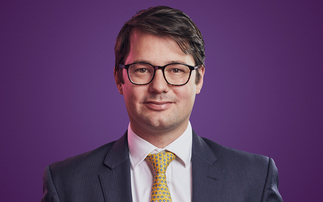Pension funds are casting a wider net in search of equity returns, as Alison Swersky reports
Plan sponsors watched in horror as equity investments were pummelled during the financial storm of 2008. A high exposure to stocks, particularly in the US, UK, Canada and Australia which are four of the world’s largest pension markets, saw global assets end that year down by more than a fifth, hitting the funding status of many schemes.
DB plans became the fall guy for many blue chip firms looking to cut operating costs to survive against a consumer recession and punishing credit costs. Not only did the value of assets shrink, but the market chaos also threw out of balance asset allocation positions, pushing up the weighting in government bonds in many cases as the equity ratio declined.
We have an annual return objective of 8.5% and I don’t know how to do that without the exposure we have
To rebalance or not to rebalance was the lip-chewing decision that many pension funds faced. Those that did were well rewarded for their courage with the MSCI World index returning about 44% since reaching a trough in March last year.
Measured in dollars, global assets grew 15.1% last year to US$23.3trn, a recent study of 13 pension markets by Towers Watson showed. However, these gains were not quite sufficient to recover the losses from 2008.
Clearly though, pension fund investing is not about courageous bets on risky assets. It needs to take many factors into consideration such as return objectives, the ability of the sponsor to plug a shortfall and the calculation of liabilities.
“Those concerned about their sponsors’ ability to contribute if the scheme deteriorated further did not want to add to their stock market position, which is quite understandable,” said Mercer partner, Nick Sykes.
“For those who were more relaxed about the sponsored cabinet, it would have been logical to rebalance back to the starting point,” he said.
A popular move for Mercer clients in the spring of 2009, said Sykes, was to top up allocations to corporate bonds, particularly short-duration credit, where spreads were compelling and which offered equity-like returns but with less risk on the downside.
“This opportunity has played out now, but it is an example of how UK pension funds are looking to play market opportunities, while at the same time continue a long-term trend to de-risk their portfolios by moving out of equities,” he added.
The US perspective
In the US, the Illinois State Board of Investment (ISBI) was one pension fund that remained fully invested up to its stated allocation during the downturn – or at least tried.
“After the sell-off in the fall of 2008, we did our best to rebalance but during that quarter we had a difficult time because of the lack of liquidity in all markets. We had a tough time selling US Treasuries to buy stocks,” said ISBI executive director William Atwood.
“At its lowest, our international exposure fell to about 16% from 20% and our US exposure to 37% from 40%. But we don’t tend to make tactical allocations and as soon as we could, we rectified that,” he added.
The manager of the State Employees’ General Assembly and Judges’ Retirement System of Illinois takes asset allocation decisions every five years, with a review every two-and-a-half years.
The last time the managers met to assess the split was in 2008, when they doubled the plan’s non-US investments to 20% of the total equity portion, up from 10%, reversing a decision taken in 2003 to reduce overseas equity investments from 15% to 10%.
“The returns analysis showed the move was deleterious to the portfolio. We made a mistake,” Atwood said.
Avoiding home bias
Over the past year, other US pension funds have followed suit and taken the first steps toward moving away from home-country bias, according to Chicago-based consultant Ennis Knupp.
The US pensions market remains the most dependent on domestic equities with around 70% of total equities invested in domestic companies. Equity experts at Ennis Knupp said they have been recommending US sponsors increase allocations to international equities since 2003 given the trend toward globalisation and global effects on share prices.
But clients in the main remained unconvinced until the storming rally in emerging markets over the past 12 months spurred many to act.
“That has resulted in more clients moving away from partitioned US and non-US equity portfolios to integrated global mandates,” said Ennis Knupp equity specialist Will Tsui.
Tsui said that searches for equity managers, and most notably emerging market strategies, jumped in the last quarter of 2009 and gathered momentum since the beginning of the year.
But isn’t investing in these markets now akin to closing the door after the horse has bolted?
“Not at all,” argued Tsui, who said for the most part the company doesn’t view emerging markets as a tactical play.
“As the economies around the world integrate further, the emerging markets will likely grow and constitute a bigger share of the investable universe,” he said.
“Within the MSCI All Country World Index, the emerging markets component has increased from 5.2% at the end of 2004 to 13% by the end of 2009,” he added.
Targeting emerging markets
The investment team at BlackRock, which manages about $2.5trn of institutional money, has also seen evidence of a build-up of emerging market exposure over the past year and also a move away from mandates segmented by geography to an active global approach.
BlackRock head of investment for fiduciary mandates Richard Urwin said that, going forward, the firm’s basic view is that sponsors should not have their maximum allocation in equities, but neither should they have a negligible amount.
“I would say we are in a grinding bull market, and over time there are sufficient returns to warrant the risk but periods of material corrections like we had in January are very possible,” he said, highlighting fresh concerns about sovereign debt in many European countries, particularly in Greece, Spain and Portugal.
He also said that as macro policy becomes less accommodating in major economies, as has already started to happen, “the initial market reaction will not be favourable”.
Urwin’s views are echoed among investment managers worldwide, according to an influential survey by Towers Watson conducted at the end of last year.
Optimism over equity returns prevailed among the participating 98 fund managers who collectively have an estimated $13.3trn of assets under management.
Respondents anticipated returns for 2010 of 10%, with expectations that stock markets will then revert to historical return levels over the next 10 years.
Most managers (87%) held bullish views on emerging markets and public equities (74%) for the next five years.
“The overall picture we get from this influential group is one of recovery, with established Western markets lagging the emerging markets on most measures,” said Towers Watson’s global head of investment, Carl Hess.
“In addition, there is greater optimism than last year reflected in, among other things, an increase in the expected propensity of investors to take risk in 2010 and managers’ commensurate bullishness about risky assets.”
The report showed expected equity volatility for 2010 in the 15% to 22% range, substantially down from the high ranges seen over the past two years.
BlackRock’s Urwin agreed that the figures were “realistic”, but said the investment firm did not make forecasts.
Dutch pension fund investor APG, which had a total of €240bn under management as of December 2009, is also bullish on equities for 2010 despite a deterioration in the risk/return trade off since last November.
APG, which manages the Stichting Pensioenfonds ABP plan for the Dutch civil service and the educational sector, highlighted considerable uncertainties going forward as policy makers set about constructing a new investment regime to avoid another meltdown in the financial system and expects a choppy ride ahead for shares.
“Already, compared to November, the balance of risks today has shifted from the risk of the cyclical recovery petering out to the risk of a policy blunder,” APG said in a report released earlier this year.
“This dynamic generates a heightened level of uncertainty that will keep markets on their toes and ultimately – if it persists – dampen participants’ risk appetite, so that risk premiums will struggle to contract much further.”
However, the manager is confident that against this backdrop monetary authorities will err on the side of caution and will do everything to nurture the recovery and therefore underwrite the taking of risks.
“In these circumstances, taking risk is bound to continue to be rewarded,” APG added.
But unlike most of its peers, the manager has more muted expectations of emerging market performance in 2010 as investors cash in from the run in 2009 when they delivered an eye-watering 90% return in US dollar terms.
It anticipates the strongest performance this year to come from the markets of developed economies with “room for further upgrades in earnings expectations, increases in dividends and stock buyback programs and M&A”.
Lessons learnt
Despite the optimism in long-only equities in the near-term, it seems pension fund managers have become more cognisant of the risks associated with stock market investment since the crisis.
Many have increased their focus on hedging strategies and alternative asset classes, including private equity, industry commentators acknowledged.
“These asset classes have the potential to increase the expected return of the portfolio, which has been a topic of interest,” said Tsui at Ennis Knupp.
“In addition, as clients continue to monitor their portfolios’ overall level of risk, these asset classes may provide additional diversification benefits,” he added, confident that this trend will gather momentum over the next few years.
But, some investors are still betting on old fashioned long-only equities to produce target-reaching returns over the next few years.
The Illinois State Board of Investment will recommend to its trustees when they meet later this year to stick with their current 60% allocation in stocks, 10% of which is in long-short strategies.
“We have an annual return objective of 8.5% and I don’t know how to do that without the exposure we have,” said Atwood.





